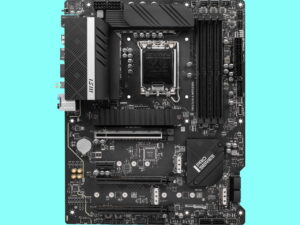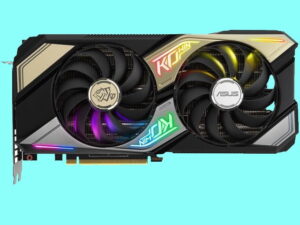While there’s still great dispute in the PC hardware enthusiast community as to who makes the best CPUs, in recent times Intel has remained consistently atop AMD in the budget processor sector. Their recent Core i3-12100 is a dominant offering for a measly $130, but what do you do if your budget limits you to a CPU under $100, or perhaps even under $50?
Enter Intel’s Celeron and Pentium lineups. Even their highest-end offerings are available for less than $40 and $80, respectively, allowing users to build functional PCs on even extremely limited budgets.
While Celeron and Pentium processors have many similarities, they cater to two slightly different segments of the market, so it’s important to understand the differences and advantages of each. In this article we’ll compare the two lineups (specifically the flagship offerings from each, the Celeron G6900 and the Pentium G7400), and discuss which series is better for your specific use case.
|
$79.33
|
$90.00
|
Overview
Before we dive into the nitty-gritty hardware specifics, a high-level overview of the Celeron and Pentium lineups is in order. Each of these series features only one main product within their latest desktop-oriented generations: Celeron has the G6900 while Pentium features the G7400.
Variations of these flagship CPUs do exist, such as the lower-TDP G7400T and the lower-clocked G7400E, as well as the G7400TE which combines the features of both of these, but they’re all virtually the same product with miniscule revision. The Celeron G6900 lineup includes the same available modifications, namely the G6900E, G6900T, and G6900TE.
Celeron represents Intel’s most budget-friendly offering of all. Of course, the tradeoff here is that it’s also Intel’s lowest-performing series. We’ll look into the specific numbers in the next section. Pentium CPUs pack a bit more punch, but are still a far cry from modern Core processors.
Both Celeron and Pentium are intended for everyday use in work or office-oriented environments where high performance isn’t requisite. Home PCs often feature one of these two processor series for this reason. Celeron and Pentium’s shortcomings become apparent mainly when utilized for tasks such as gaming or running complex code.
Celeron vs. Pentium: Specifications
Both the Celeron G6900 and the Pentium G7400 feature two Golden Cove performance cores, the same ones found in 12th-gen Intel Core SKUs. The Celeron make has only two threads and a base frequency of 3.4GHz, while the Pentium has two threads per core (for a total of four) and a slightly higher base clock of 3.7GHz.
The G6900 and G7400 share the same base power of 46W and small 2.5MB L2 cache (half the size of the Core i3-12100). Both models support the same memory specifications as the i3-12100: a maximum of 128GB and compatibility with both DDR4 and DDR5 (at 3200MHz or 4800MHz maximum). Granted, the odds of anyone making use of more than 16 gigs of memory or DDR4 RAM with a budget processor such as these are probably fairly low.
In a similar vein, both SKUs support up to PCIe 5.0, although the use of these capabilities isn’t recommended for the sake of cost-efficiency. The latest Pentium and Celeron CPUs are built for an LGA1700 socket type, meaning they’re compatible with the same motherboard chipsets as the Core lineup: H610, B660, H670, and Z690.
Both makes come equipped with Intel’s integrated UHD Graphics 710 which, while nothing to write home about in terms of performance, will alleviate the need to buy a discrete graphics card for general use.
Performance
Where performance is concerned, the cheaper Celeron line is naturally slower than Pentium in both single-threaded and multi-threaded tasks by a fairly wide margin. When factoring in Celeron’s comparatively discounted price, however, this discrepancy is acceptable.
| Celeron G6900 | Pentium G7400 | Intel Core i3-12100 | Intel Core i9-12900K | |
|---|---|---|---|---|
| Cinebench R23 Single-Core | 1164 | 1396 | 1658 | 2002 |
| Cinebench R23 Multi-Core | 2287 | 3814 | 8443 | 27198 |
Single-Core
The Pentium G7400 outperforms the Celeron G6900 quite handily in single-core performance, beating it 1396 to 1164 in Cinebench R23, a rough 20% lead.
This is in comparison to the Core i3-12100’s 1658 and the Core i9-12900K’s 2002.
Multi-Core
In Cinebench R23, a popular CPU benchmarking software, the G6900 scored 2287 points in multi-core performance while the G7400 scored 3814, a 66.8% advantage.
For reference, the lowest-performing 12th-gen Core CPU (the i3-12100) scores roughly 8443 in multi-core, while the Core i9-12900K scores 27198. It is to be expected that both Celeron and Pentium processors are demolished by Core-series scores; even the i3-12100 has twice as many performance cores, while the i9-12900K has four times as many.
Price
While price isn’t a constant, the G6900 is consistently priced well below the G7400. Intel’s recommended customer price is $42-52 for the G6900 and $64-74 for the G7400. This makes the G7400 52.3% more expensive on the low end and 42.3% more expensive on the high end.
In the wild, The G7400 tends to hover closer to $80 or $90, while the G6900 is usually around $40. Prices are eternally in flux, so this may not be the case when you’re looking to buy. Always check prices and reevaluate based on the current market before making a purchase.
When considering price, however, it’s essential to include the cost of a compatible motherboard as well. With either of these budget processors, it’s best to opt for a bare-bones H610 board (or a B660 if comparably priced), since neither of these CPUs draws enough power to take full advantage of even the cheapest VRMs.
The exception to this rule would be if you desire greater connectivity than the lowest-tier motherboards can accommodate. Large quantities of USB ports usually come at a slight premium.
When considering the combined cost of CPU and motherboard, then, the Pentium’s price seems a lot more reasonable. Using $90 as the estimated motherboard price and high-end price estimates for both CPUs, the G6900 plus board cost $142, while the G7400 plus board is $164. This is a much more reasonable 15.5% uptick in price for the upgrade from G7400 to G6900.
Celeron vs. Pentium: Which is Better Overall?
While it’s obvious that Pentium processors outshine Celerons performance-wise, is it enough to justify the leap in price? This depends entirely upon your use-case.
If your PC is effectively an email-writing, word-processing, weather-checking machine, a latest-gen Celeron processor is probably perfect for you. You’re unlikely to max that out, and it would be inefficient to spend money on unused computing power.
If you’re doing much more than that it certainly wouldn’t hurt to spend an extra $40 on a Pentium G6900. This CPU is still extremely cheap, and substantially more capable than Celeron models.
Finally, if you’re using your PC for gaming in any capacity above and beyond Minecraft at lowest settings, programming, or any other CPU-intensive task, consider making the jump to an Intel Core processor and a discrete graphics card. While a little bit more expensive, you’ll be glad you made the upgrade. Time is money, and you’ll save enough of it to warrant the additional cost in the long run.






